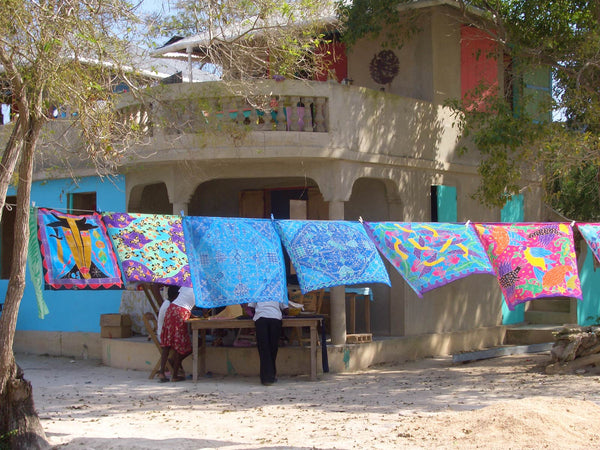Our Story
Difficult to get to, and relatively unknown even in Haiti, Matènwa has little direct access to the outside world. It is a community facing challenges, much like other towns in Haiti, and choosing to address and solve them in unique, creative ways.

The town hosts our art center, where artisans produce beautiful designs distinct from typical Haitian crafts. It also hosts one of the country’s most progressive community schools: Lekol Kominote Matènwa (Matènwa Community Learning Center). Art Matènwa evolved from a small experiment 20+ years ago when Christine Low, co-director of the Learning Center, and Ellen LeBow, a visiting artist, attempted to address a growing local problem. Women, who do much of the labor and child-rearing, were battling to feed their families, and too often depending on men who had less and less means to make a living in traditional farming. The experiment’s goal was to combine the community women’s latent reservoir of creativity with a structure that could lead toward more economic stability.

The hope was to teach an income-generating skill that included the delight of artistic accomplishment, all without using up limited natural resources like wood and water that would rock an already fragile ecological balance.
Learning to hand-paint brilliant imagery on silk scarves offered an elegant solution -- low-tech, unbreakable, an ideal vehicle for self-expression. In addition a beautiful scarf is a traditional Haitian accessory the women in Matènwa appreciate.
From the original group of seven women painters, the Sant Atizana Matènwa (“Matènwa’s Art Center” in Krèyol) has grown to include forty-five artisans - four different groups honing their skills in a variety of techniques. The locus of our collaboration is our sturdy, brightly painted workshop where the artists, almost all mothers, converge. The atmosphere is warm, quiet, safe and focused. Kids, dogs and chickens play on the verandas while the artists work.

